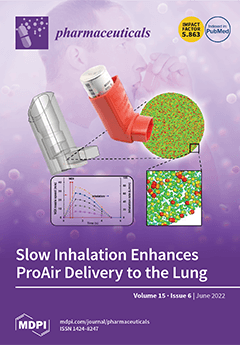The present research is a comprehensive investigation of
Dasycladus vermicularis (Scopoli) Krasser 1898 from the Adriatic Sea (Croatia) regarding volatilome–volatile organic compounds (VOCs, mostly nonpolar compounds) and less polar nonvolatile compounds for the first time. Headspace solid-phase microextraction (HS-SPME) and hydrodistillation (HD) were
[...] Read more.
The present research is a comprehensive investigation of
Dasycladus vermicularis (Scopoli) Krasser 1898 from the Adriatic Sea (Croatia) regarding volatilome–volatile organic compounds (VOCs, mostly nonpolar compounds) and less polar nonvolatile compounds for the first time. Headspace solid-phase microextraction (HS-SPME) and hydrodistillation (HD) were used showing the great volatilome variability among fresh (HS-FrDV and HD-FrDV) and dried (HS-DrDV and HD-DrDV) samples after GC–MS analysis. Aromatic aldehydes were dominant in both fresh and air-dried HS samples with benzaldehyde as the most abundant in fresh samples and decreasing 2.7–3.7 times after drying together with 2-phenylbut-2-enal that was not present after drying. Aliphatic compounds (unsaturated hydrocarbons in HS-FrDV; saturated hydrocarbons in HS-DrDV) were also present. C
11-hydrocarbons (dictyopterpene C’ and dictyopterpene D’) were detected in HS-FrDV. (
E)-Phytol was the most dominant compound in HD-FrDV and HD-DrDV. Diterpene alcohols (cembra-4,7,11,15-tetraen-3-ol and (
Z)-falcarinol) and sesquiterpene alcohol, cubenol, were dominant in HD-FrDV, and their abundance decreased after drying. C
13-norisoprenoides (α-ionone and β-ionone) increased after drying. Aliphatic compounds were present in both HD-FrDV and HD-DrDV samples. The less polar nonvolatile compounds in the obtained fractions F3 and F4 were analysed and identified by UHPLC-ESI(+)-HRMS. Identified compounds belonged to a group of pigments (7 compounds), fatty acid derivatives (13 compounds), as well as steroids and terpenes (10 compounds). Porphyrin-based compounds (C
55H
74N
4O
5–7), xanthophylls, sphingolipid compounds, fatty acid amides, and phytosterols represented the majority of identified compounds. By implementing both in vitro and in vivo assays for antioxidant activity determination, F3 showed a higher activity than F4. Inhibitory concentrations (IC
50) for F3 and F4 were 498.00 ± 0.01 µg/mL and 798.00 ± 0.81 µg/mL, respectively, while a 1.5-fold reduction in the ROS level was observed after pre-treatment of zebrafish larvae with 45 µg/mL of F3.
Full article






